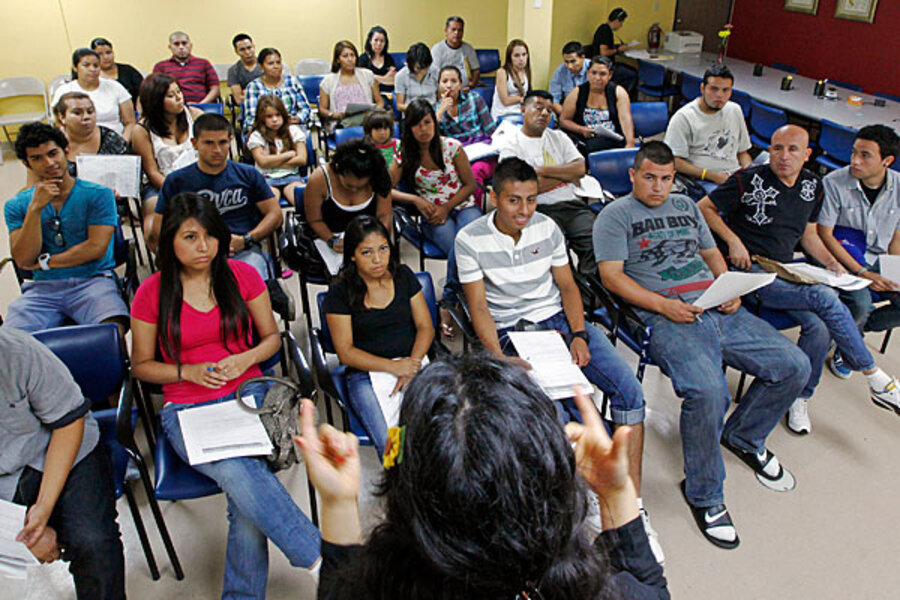Illegal immigration: Who's applying for Obama's 'DREAM Act' deferrals?
Loading...
| Washington
About one-quarter of the young undocumented immigrants eligible for the two-year deportation deferral established by President Obama have applied since the program started Aug. 15
Statistics released last week by the US Citizenship and Immigration Services (USCIS) gave the fullest portrait yet of who is applying, and they suggested that enthusiasm for the program was not dampened by the uncertainty caused by presidential election.
Republican nominee Mitt Romney had waffled on how he would handle the program, leading some immigration advocates to wonder if applicants might be wary of starting the process until the election was decided. But the data show the election had little effect on the process.
After the first month of the program, 82,000 applications had been filed with USCIS. By Nov. 15 – the program's three-month mark – 300,000 applications had been filed, marking steady growth. The Migration Policy Institute estimates that 1.2 million undocumented immigrants nationwide are eligible for the program, called Deferred Action for Childhood Arrivals (DACA).
“I am elated that so many applications are coming in and now that the fear of Romney winning is out of the way,” said Rep. Luis Gutierrez (D) of Illinois, a leading immigration-reform advocate who pushed the Obama administration to set up DACA, in a statement. “I think a half-million applications by New Year's should be our goal.”
To qualify for the DACA program, applicants must have been under age 31 on June 15, have lived in the United States for five or more years consecutively, meet military-service or educational requirements, have come to America before age 16, and have no significant criminal record. Applicants must pay $465 in fees and submit to a biometric scan and background investigation.
The data released last Friday offer more insight on the applicants:
- Some 17 percent of all applicants (about 50,000) have been accepted, bestowing a two-year deferral from deportation proceedings and the opportunity to receive a work permit but no path to US citizenship.
- About 3 percent of applications have been rejected so far. Some rejections could be for simple reasons like mistakes on forms, which could be resubmitted. USCIS has not published the number of applications that have been vetted and denied, for which there is no appeals process. [Editor's note: The rejection process was not fully explained in the original.]
- Two in 3 applicants are of Mexican origin, with the next largest national group being from El Salvador. Citizens of that country make up slightly less than 1 in 20 applicants.
- South Koreans make up the largest non-Spanish speaking group, at 1.6 percent of all applicants. Overall, they are the sixth-largest national applicant group.
- California (with 81,500) and Texas (47,700) had the most applicants by state, with New York, Florida, and Illinois rounding out the top five with between 19,000 and 13,000 applicants apiece.
The program is a sort of miniature version of the DREAM Act, legislation that would put on a path to US citizenship young people who are in a similar situation to those eligible for DACA. With the DREAM Act (and broader immigration reform) stalled in Congress, Mr. Obama announced the DACA policy on June 15 as a stopgap measure to help stop deportation of young illegal immigrants brought to the US while minors.
Representative Gutierrez, who will eat a Thanksgiving meal with 21 DACA recipients and their families on Wednesday evening, hopes that the popularity of DACA – combined with the November election, where 70 percent of Latinos voted for Obama – will help compel Washington to make permanent immigration reform a priority in 2013.
“The American people rejected the politics of division at the ballot box, and now we are poised to move immigration reform when the Congress convenes in January,” he said.





